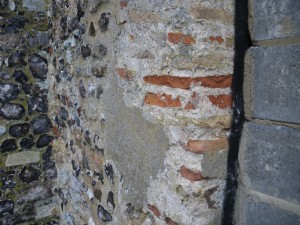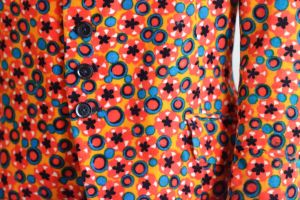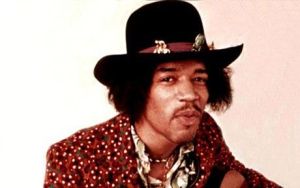Featured image: Zappa in 1971 by Heinrich Klaffs
It’s just been announced that Alex Winter (of Bill & Ted notoriety) has finished his documentary Zappa, which was made with full access to the contents of the Zappa family vault.
https://www.rollingstone.com/movies/movie-news/frank-zappa-south-by-southwest-doc-937847/
The premiere is at SxSW in March so I don’t know what’s in the film, but I’m hoping it will cover at least some of his summer sojourn in Eastern Europe in 1991. Within the space of a week, Frank attended celebrations of the withdrawal of the Soviet Army in two capital cities – Prague in Czechoslovakia, and Budapest in Hungary – and played with local bands at events in both cities. These turned out to be his last public musical performances.
The invitations didn’t come out of the blue. Zappa’s music was massively inspirational to the artistic underground in Czechoslovakia and that had led to a visit the previous year when he met the new President Vaclav Havel and was made a consultant to the government in matters of trade, tourism and cultural exchange. This was a serious enough appointment that he registered with the US government as an agent of a foreign power (you can imagine the smile on his face when he filled in that form). The Americans soon pressured the Czechs into dropping him – the wife of US Secretary Of State James Baker was one of the founders of the PMRC (Parent’s Music Resource Council) with whom Zappa had had a number of run ins during the Obscenity Wars of the 1980s – but he was still held in high regard in Prague.

He was invited to attend the presidential election in summer 1990 but declined. He did however accept an invitation to the celebrations marking the withdrawal of the Soviet Army, which had been in Czechoslovakia ‘temporarily’ for 23 years. The withdrawal had been delicately negotiated in large part by Michael Kocab, a musician and composer who was an acquaintance of Frank and was now also a member of the Czechoslovak government. Zappa then went on to similar celebrations in Budapest, having been invited by the city’s Mayor Gábor Demszky with whom he’d had lunch in Los Angeles back in April. Frank was apparently particularly amused that Gabor was going to see Ronald Reagan next.
The problem about playing guitar at these events, as was being expected of him, was that Zappa’s last tour had been in 1988 and had ended prematurely and acrimoniously (why is a tangent too far for this post, but it’s explained in Frank’s own words here). As a result, as he told the Budapest audience:
“At the end of the tour, I put my guitar in its case and I haven’t seen it since then”.
He’d been working on composition (including his last major work Civilization Phaze III, and the orchestral pieces that were released as The Yellow Shark a month before he died in 1993) and generally avoiding musicians, who he saw as an expensive complication to the process of making music. He told an interviewer just before he left for Europe:
[…] they want me to bring my guitar over and play. And I haven’t touched it for years. I don’t have any calluses! I don’t know what to do with that fucking thing. And if I don’t take it along with me I know a lot of people will be disappointed, but I know if I plug it in they’re going to be even more disappointed, [laughs] ’cause I can’t play anymore.
The celebration in Prague was on 24th June 1991 and included a concert by Pražský VýbÄ›r in the Sports Hall in Prague. Pražský VýbÄ›r had also been a symbol of resistance to the Communist authorities having been banned and, in some individual cases, imprisoned during the 1980s. They were led by Michael Kocab, moonlighting from his government minister job, and featured Michal Pavlicek on lead guitar. I’m not sure if Frank had heard any of the band’s music before but he was familiar with Kocab’s solo compositions such as the ballet score Odysseus. Anyway he tied back his hair, slowly pushed their jazz reggae vibe in the right direction and played some pretty good guitar on that well-known track, “Improvisation in A Major”. The back and forth guitar with Michal Pavlicek is particularly enjoyable.
Despite the title of the Youtube clip, Prague wasn’t his last performance. That came 6 days later on 30th June at the Búcsú (Farewell) Fesztivál in Tabán, a district of Buda which had a park often used for large events.
This time he played with a band containing some of Hungary’s leading jazz musicians – Gyula Babos on guitar, János Egri on bass, Béla “Szakcsi” Lakatos on keyboards, and Imre KÅ‘szegi on drums – referred to as the Gypsy Friends. Jazz had always been a much more acceptable form of expression in the Eastern European Communist countries than rock music. Being a gypsy was, however, not as acceptable. The Roma had been treated as a source of unskilled labour by the Communist regime in Hungary and when the industries that needed that labour collapsed along with Communism, they found themselves out of work and subject to the old prejudices. Was Frank making a statement by giving the band that name? Mayor Demszky Gábor, now acting as translator, certainly seems momentarily surprised, as if he’s not sure what the rules are any more.
While you can argue endlessly (and people have) about whether Zappa played jazz, it seems fair to say he was ambivalent about it – that same month he’d released an album of instrumentals compiled from the 1988 tour recordings called Make A Jazz Noise Here. But he seems to genuinely enjoy playing with the musicians, who he’d only met the day before and had had a one song rehearsal with that morning. He gives them lots of space to do their thing and then jumps in when he sees fit. Or more precisely, kneels down since he plays the last few solos squatting. I wonder if he was having trouble hearing his guitar and wanted to get nearer the speaker cabinet?
The day after the Budapest concert, the leaders of the Warsaw Pact member countries met in Prague to complete the dissolution of the organization by shutting down its Political Consultative Committee. The Cold War was effectively over.
What only his family knew at the time was that Frank Zappa was dying, having been diagnosed with inoperable prostate cancer the previous year. He made it to the Frankfurt Festival in September 1992 to conduct the Ensemble Modern on some of the pieces which became The Yellow Shark, but was too ill to even attend the remaining concerts in Berlin and Austria. He died on December 5th 1993 and was buried the following day in an unmarked grave.
Budapest thus became his final public performance as a musician.
Useful sources:
wiki.killuglyradio.com – A fascinating interview given as Frank was about to leave for Europe
books.google.co.uk – Frank Zappa by Barry Miles, especially chapter 20


 Inspired by
Inspired by  There are two star exhibits. One is the
There are two star exhibits. One is the 